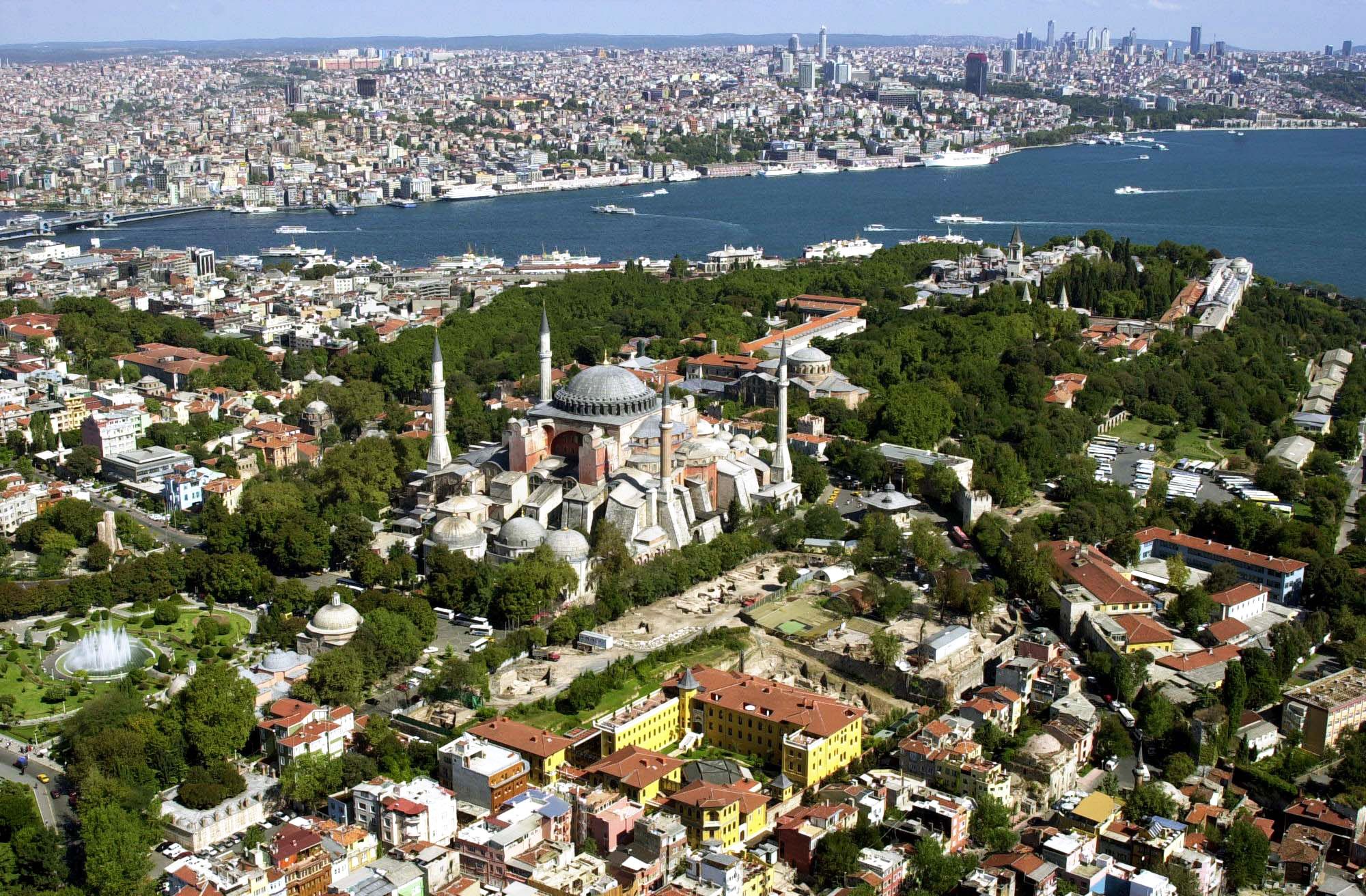
漢德百科全書 | 汉德百科全书
 Medieval cities in Europe
Medieval cities in Europe
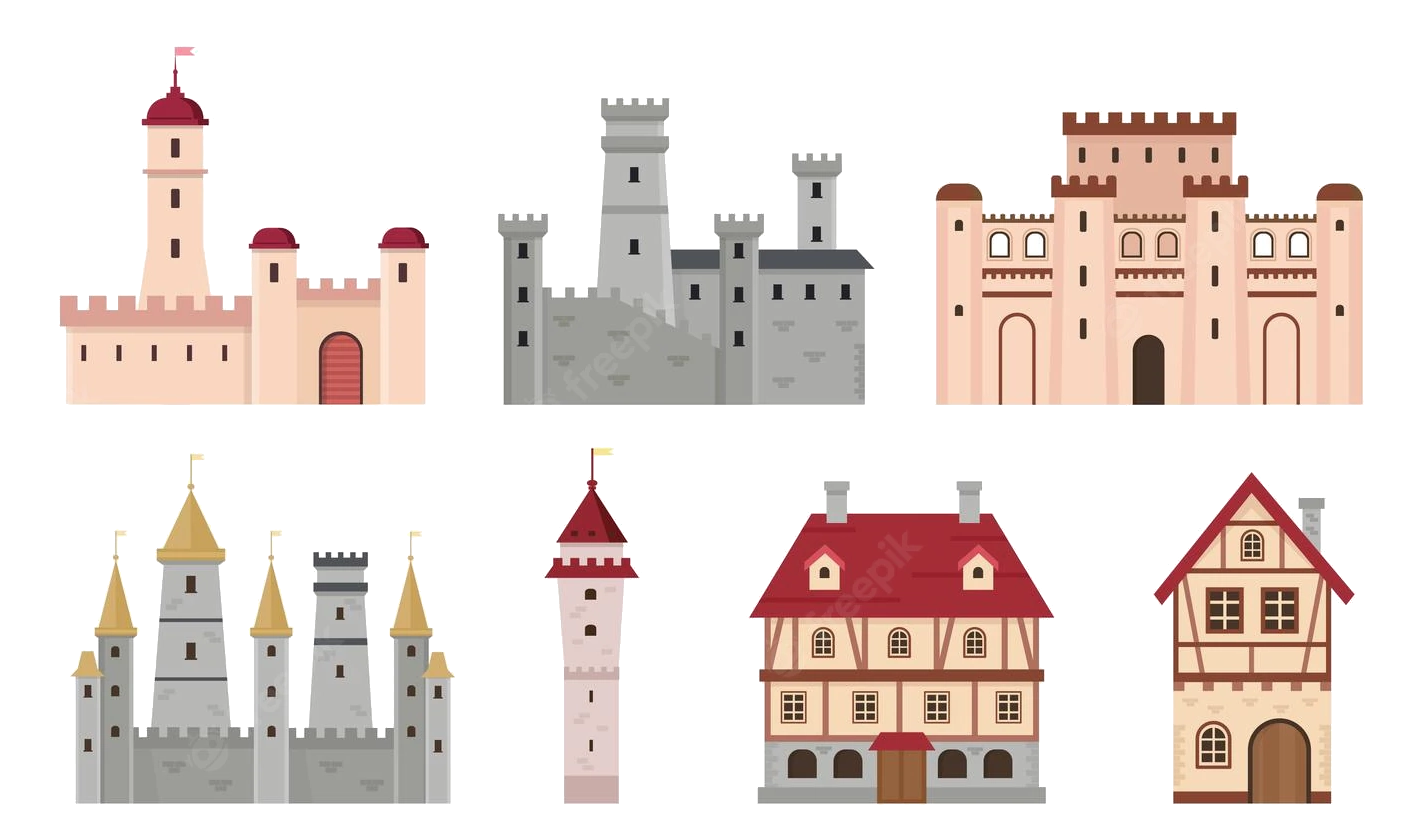

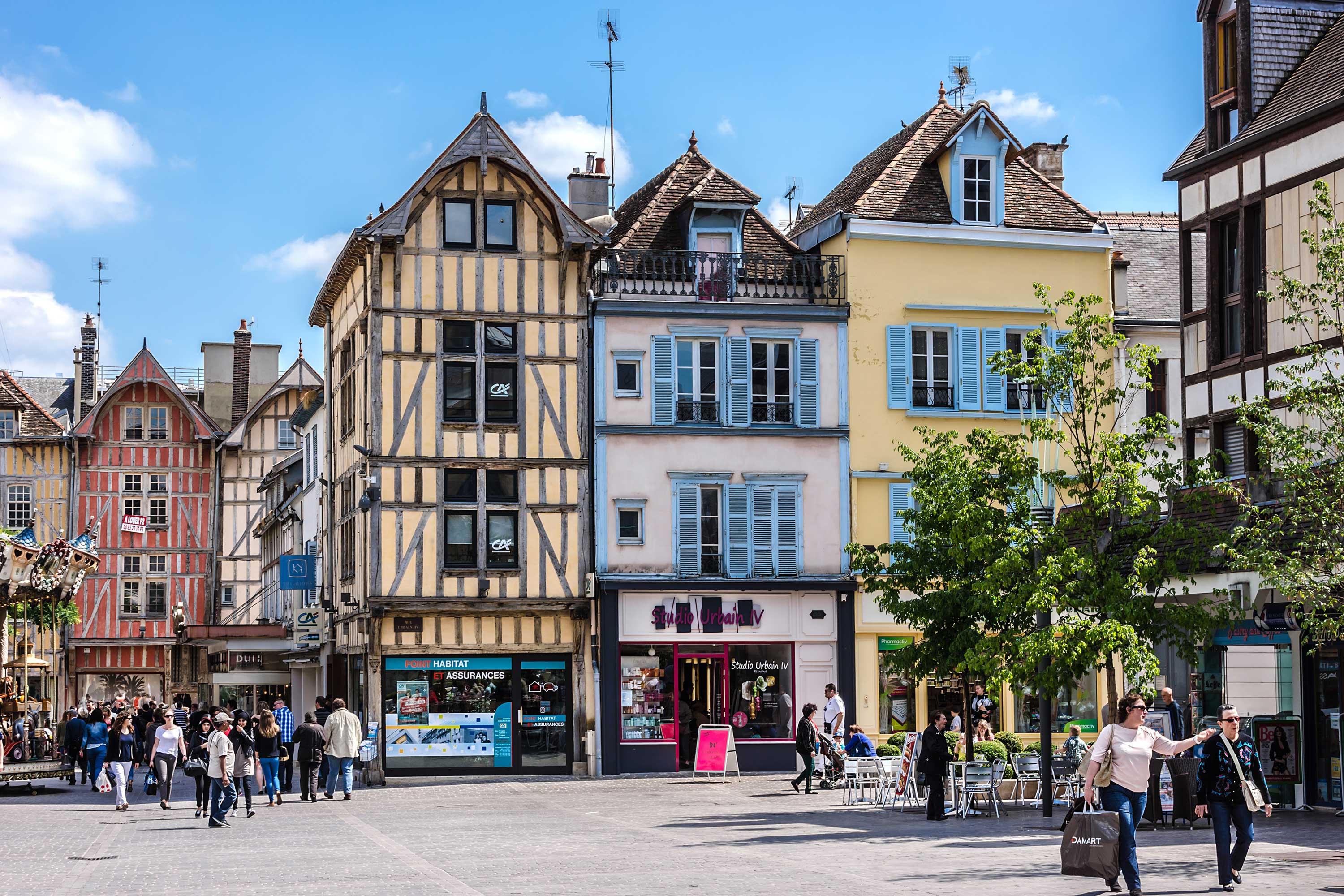
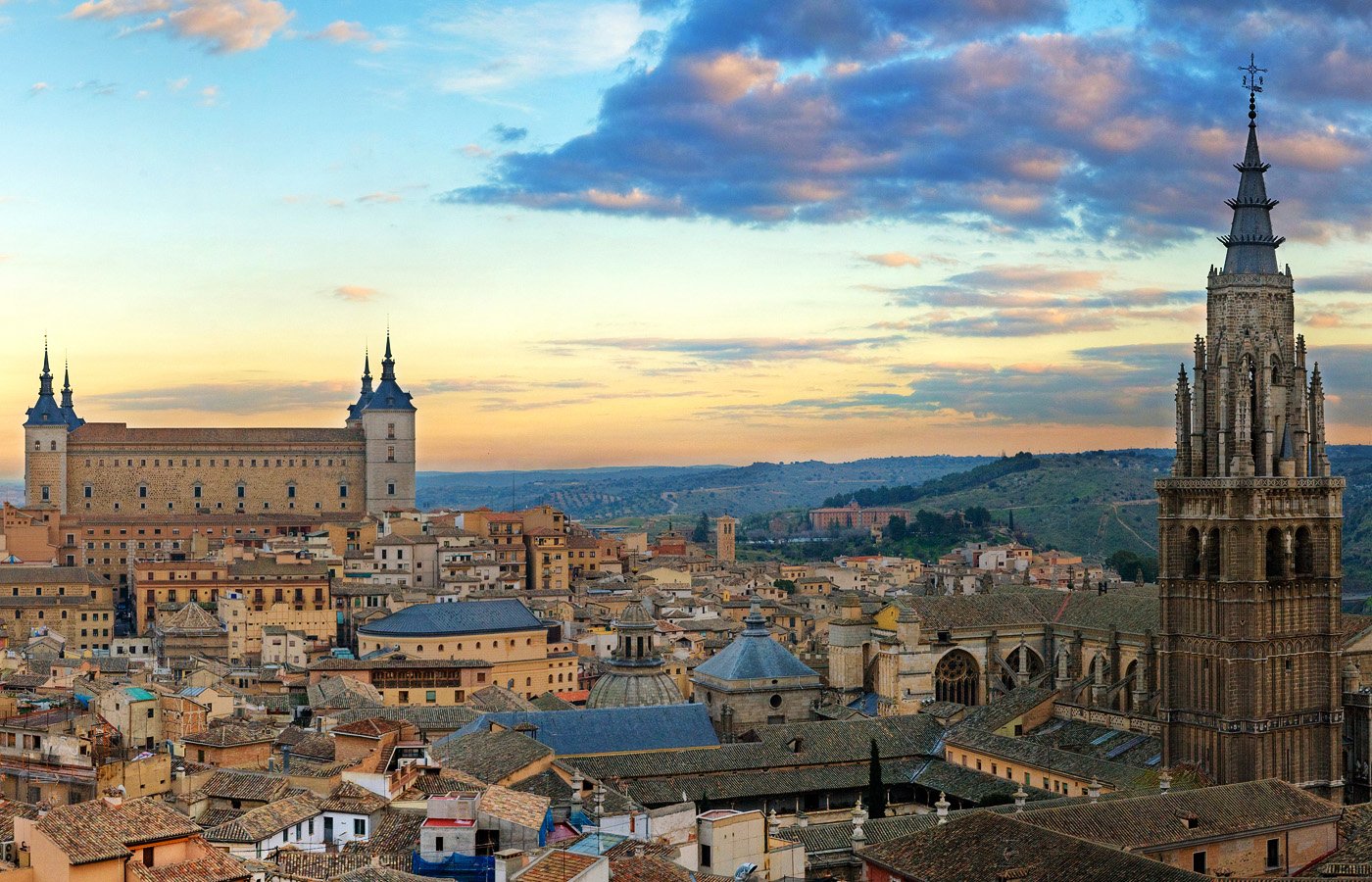
Toledo (spanisch [toˈleðo]) ist die Hauptstadt der spanischen Provinz Toledo sowie der autonomen Region Kastilien-La Mancha und liegt 65 km südsüdwestlich von Madrid am Fluss Tajo. Die Stadt hatte am 1. Januar 2017 83.741 Einwohner und ist Sitz des Erzbistums Toledo. Zusammen mit Segovia und Ávila gehört sie zu den drei historischen Metropolen in der Umgebung der spanischen Hauptstadt Madrid.
托莱多(西班牙语:Toledo,西班牙语:[toˈleðo]),又称杜丽多,是西班牙中部的一个自治市,位于马德里西南约70公里。托莱多是托莱多省的首府,也是其所在的卡斯蒂利亚-拉曼恰自治区的首府。该市2017年人口83,741人[1]。
托莱多始于罗马时期,在腓力二世前为卡斯蒂利亚王国(后西班牙王国)首都。它因其保存完好的基督教、伊斯兰教和犹太教建筑而在1986年被评为世界文化遗产,有哥特式、摩尔式、巴洛克式和新古典式各类教堂、寺院、修道院、王宫、城墙、博物馆等古建筑70多处。
トレド(Toledo)はスペイン・カスティーリャ=ラ・マンチャ州のムニシピオ(基礎自治体)。カスティーリャ=ラ・マンチャ州の州都であり、トレド県(人口約60万人)の県都である。マドリードから南に71kmの距離で、タホ川に面する。
かつての西ゴート王国の首都であり、中世にはイスラム教・ユダヤ教・キリスト教の文化が交錯した地である。「町全体が博物館」と言われ、タホ川に囲まれた旧市街は世界遺産に登録されている[3]。また、ルネサンス期のスペインを代表するギリシア人画家のエル・グレコが活躍した町としても有名。金銀細工の伝統工芸品「ダマスキナード」がある[4]。
Toledo (Spanish: [toˈleðo]) is a city and municipality located in central Spain; it is the capital of the province of Toledo and the autonomous community of Castile–La Mancha. Toledo was declared a World Heritage Site by UNESCO in 1986 for its extensive monumental and cultural heritage.
Toledo is known as the "Imperial City" for having been the main venue of the court of Charles V, Holy Roman Emperor, and as the "City of the Three Cultures" for the cultural influences of Christians, Muslims and Jews reflected in its history. It was also the capital from 542 to 725 AD of the ancient Visigothic kingdom, which followed the fall of the Roman Empire, and the location of historic events such as the Visigothic Councils of Toledo. Toledo has a long history in the production of bladed weapons, which are now popular souvenirs of the city.
People who were born or have lived in Toledo include Brunhilda of Austrasia, Al-Zarqali, Garcilaso de la Vega, Eleanor of Toledo, Alfonso X, Israeli ben Joseph, Halevi and El Greco. As of 2015, the city had a population of 83,226.[1] and an area of 232.1 km2 (89.6 sq mi).
Tolède (en espagnol Toledo) est une ville du centre de l’Espagne, capitale de la province du même nom et de la communauté autonome de Castille-La Manche.
Toledo (85.000 abitanti circa, toledani, in spagnolo toledanos) è una città situata nel centro-sud della Spagna, appartenuta all'antico Regno di Castiglia che aveva come capitale la città di Burgos. Attualmente è capoluogo dell'omonima provincia e della Comunità Autonoma di Castiglia-La Mancia. Per tradizione l'arcidiocesi di Toledo, la più importante del Paese, è sede primaziale, cioè all'arcivescovo di Toledo spetta il titolo di Primate di Spagna.
Toledo es un municipio y ciudad de España, capital de la provincia homónima y de la comunidad autónoma de Castilla-La Mancha. Es conocida como «La ciudad Imperial» por haber sido la sede principal de la corte de Carlos I5 y también como «la ciudad de las tres culturas», por haber estado poblada durante siglos por cristianos, judíos y musulmanes. Toledo, con 83 741 habitantes (INE 2017), es el municipio más poblado de la provincia y el tercero de la comunidad autónoma de Castilla La Mancha , tras Albacete y Guadalajara.
El casco histórico está situado en la margen derecha del Tajo, en una colina de cien metros de altura sobre el río, el cual la ciñe por su base, formando un pronunciado meandro conocido como «Torno del Tajo». El municipio cuenta con barrios muy separados del núcleo principal: el de Azucaica, en la orilla derecha del río, que tiene su origen en una antigua pedanía de la ciudad, dista unos 7 km del centro de la ciudad, mientras que el de Santa María de Benquerencia, situado prácticamente enfrente del anterior en la margen izquierda del Tajo, sitúa su centro a unos 8 km del de la ciudad. El municipio es considerado individualmente como una comarca en la división realizada por la Diputación Provincial,6 aunque desde un punto de vista estrictamente de geografía física la ciudad es puerta de la comarca natural de La Sagra, que tradicionalmente se ha considerado que comenzaba en la propia puerta de Bisagra.7
La historia de la ciudad se remonta a la Edad del Bronce. Fue un importante centro carpetano hasta su conquista romana en 193 a. C. y quedan diversos restos de la actividad romana en la ciudad, como el acueducto o el circo. Tras las invasiones germánicas, la ciudad se convertiría con Leovigildo en capital y, posteriormente, en principal sede eclesiástica del Reino visigodo. En el año 711, después de una resistencia moderada, Toledo fue conquistada por los musulmanes dirigidos por Táriq ibn Ziyad. Durante el dominio musulmán, la antigua capital visigoda se caracterizó por su oposición e individualismo, concretado en la Taifa de Toledo. Alfonso VI reconquistó la ciudad en 1085. Durante la Edad Moderna la ciudad destacó como sede de los Reyes Católicos y por su participación en la guerra de las Comunidades de Castilla. Al trasladarse la corte a Madrid en 1561 la ciudad entró en decadencia, acentuada por la crisis económica del momento. Ya en época contemporánea, su alcázar se convirtió en un símbolo de la Guerra Civil debido a su asedio y defensa. En 1983 se convirtió en capital de Castilla-La Mancha, manteniendo la capitalidad de la provincia de Toledo.
Tradicionalmente, la industria metalúrgica ha sido la base económica, sobre todo por la fabricación de espadas y cuchillos. En la actualidad la gran mayoría de la población se dedica al sector servicios, que también refleja el mayor número de parados. En cuanto a infraestructuras, la ciudad cuenta con diversas carreteras, incluida una autopista de peaje. Existe una línea de ferrocarril AVANT (Renfe) que conecta Toledo-Madrid en 33 minutos. Cuenta además con diversas infraestructuras sanitarias, incluido un Hospital Nacional de Parapléjicos, deportivas y militares, como la Academia de Infantería.
Toledo es Patrimonio de la Humanidad desde 1986 y entre sus edificios se destacan la catedral de Santa María, de estilo gótico del siglo XIII, y el monasterio de San Juan de los Reyes, gótico isabelino del siglo XV. La ciudad ha sido lugar de nacimiento o residencia de artistas como Garcilaso de la Vega o el Greco.

 History
History
 Italy
Italy

 Medieval cities in Europe
Medieval cities in Europe
 Silk road
Silk road

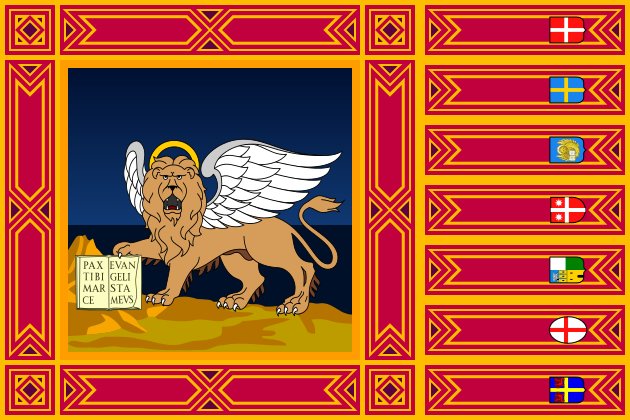 Veneto
Veneto
 Venice
Venice

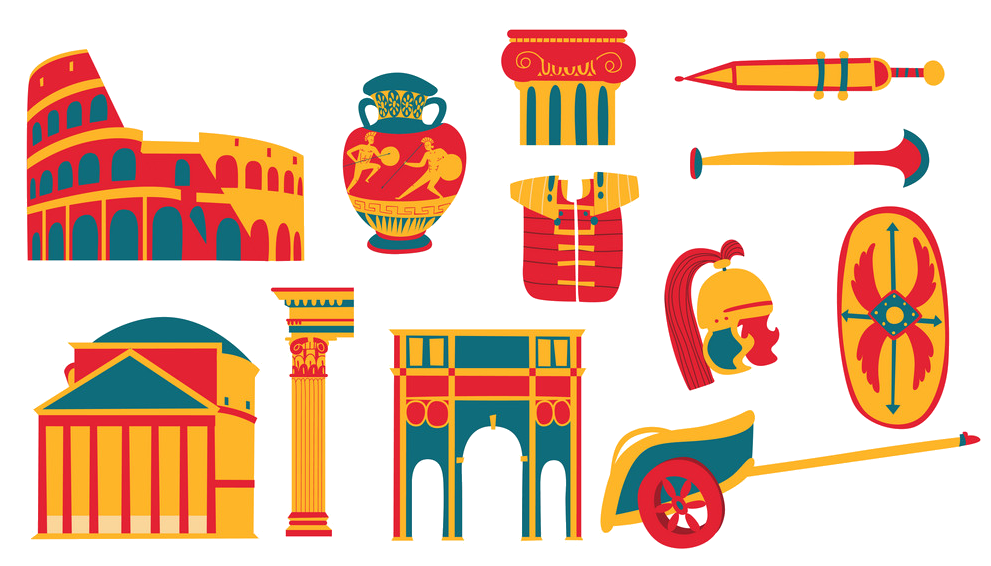 Cities founded by the Romans
Cities founded by the Romans

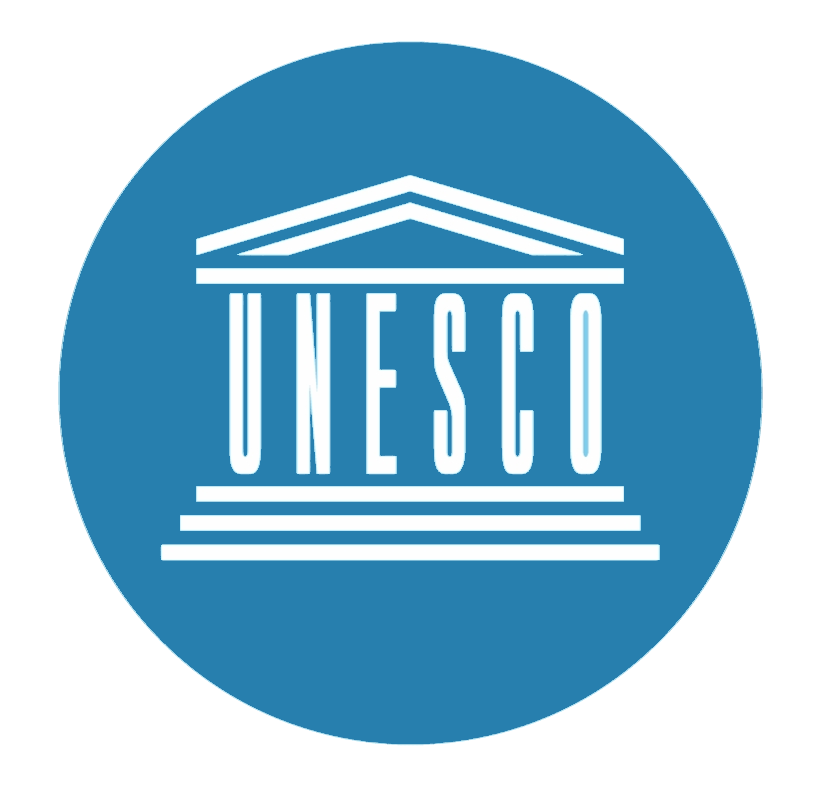 World Heritage
World Heritage

 Important port
Important port
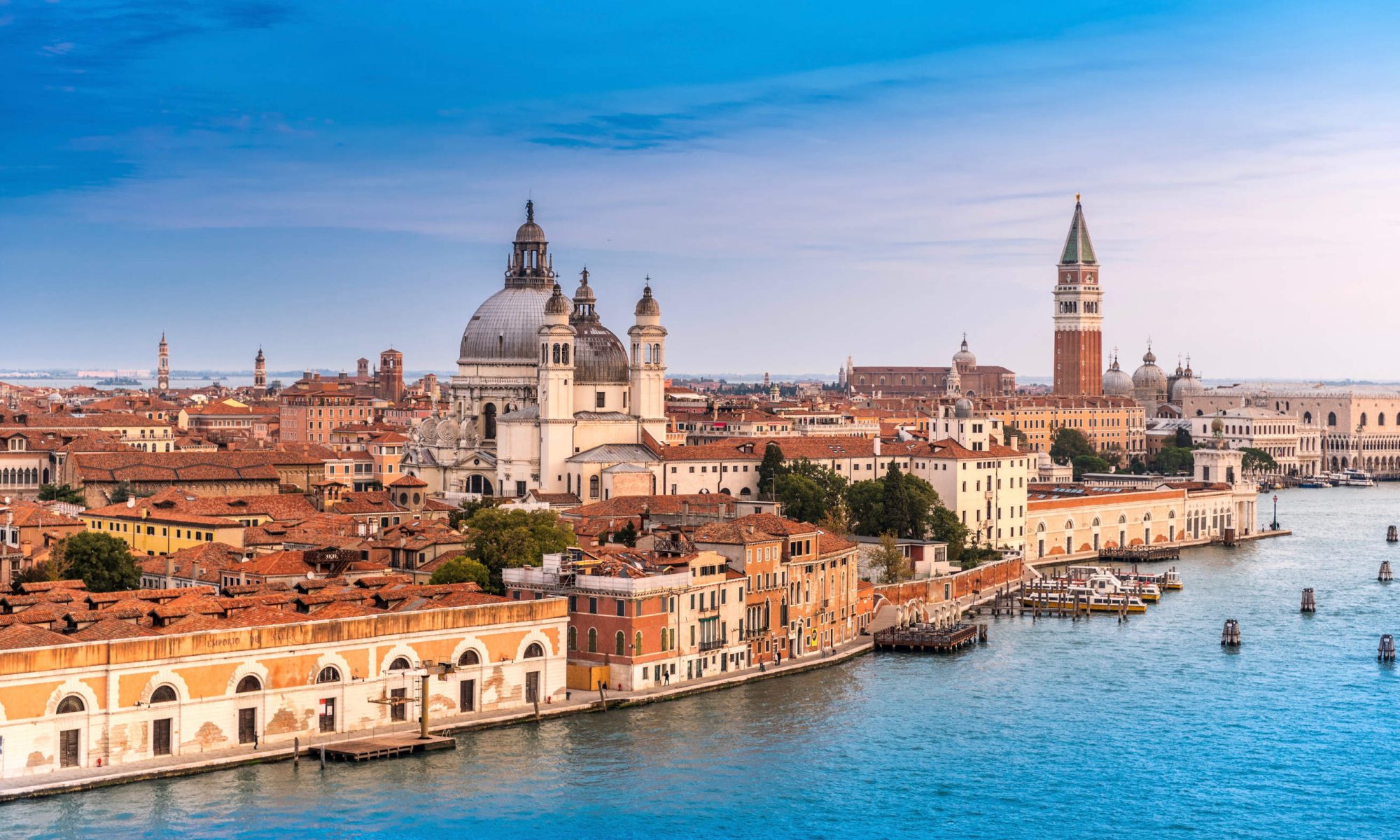
Venedig (italienisch Venezia [veˈnɛʦːi̯a], venezianisch Venesia[2] [veˈnɛzi̯a] oder [veˈnɛzja]) ist eine Stadt im Nordosten Italiens. Sie ist die Hauptstadt der Region Venetien, Metropolitanstadt Venedig und trägt den Beinamen La Serenissima („Die Durchlauchtigste“).[3] Ihr historisches Zentrum (centro storico) liegt auf einigen größeren Inseln in der Lagune von Venedig.
Die Gesamtfläche Venedigs beträgt 414,6 km², davon entfallen 257,7 km² auf Wasserflächen.[4] Am 31. Dezember 2016 zählte die Stadt 261.905 Einwohner, davon 181.883 in den Stadtteilen auf dem Festland, 58.901 im historischen Zentrum und 29.674 innerhalb der Lagune.[5] In der Lagune befinden sich 118 Inseln.[6] Sie erstreckt sich über etwa 50 km zwischen den Mündungen der Flüsse Adige (Etsch) im Süden und Piave im Norden in die Adria.
Venedig war bis 1797 Hauptstadt der Republik Venedig und mit über 180.000 Einwohnern eine der größten europäischen Städte. Bis ins 16. Jahrhundert war sie eine der größten Handelsstädte, über die der Handel zwischen Westeuropa und dem östlichen Mittelmeer abgewickelt wurde. Venedig unterhielt die meisten Handels- und Kriegsschiffe. Ihr Adel profitierte vom Handel mit Luxuswaren, Gewürzen, Salz und Weizen. Venedig entwickelte sich zum größten Finanzzentrum und dominierte ein Kolonialreich, das von Oberitalien bis Kreta und zeitweise bis nach Zypern reichte.[7] Nach französischer und österreichischer Herrschaft zwischen 1798 und 1866 wurde Venedig ein Teil Italiens. 1929 wurde der Industriekomplex Mestre-Marghera in die Comune di Venezia eingemeindet. Der jüdische Anteil der Bevölkerung wurde während des Zweiten Weltkriegs vernichtet. In den Jahren 1965 bis 1970 erreichte die Stadt mit knapp 370.000 Einwohnern die höchste Bevölkerungszahl, die seitdem wieder um etwa 100.000 Einwohner zurückgegangen ist.
Venedig und seine Lagune stehen seit 1987 auf der UNESCO-Liste des Weltkulturerbes.[8] Sie inspirierten besonders die Künstler und Venedig wurde zu einer der von Touristen meistbesuchten Städte. Seit einem Jahrhundert ist die wirtschaftliche Struktur der Altstadt einseitig auf den Tourismus ausgerichtet, während sich die industrielle Tätigkeit vor allem um Mestre und Marghera auf dem westlichen Festland konzentriert.
威尼斯(威尼斯语︰Venezsia;意大利语︰Venezia;弗留利语︰Vignesie;拉丁语︰Venetia;英文:Venice)是意大利东北部著名的旅游与工业城市,也是威尼托地区的首府。威尼斯城由被运河分隔并由桥梁相连[1]的118座小岛组成。[2]威尼斯潟湖是位于波河与皮亚韦河河口之间的一个封闭的海湾,威尼斯城就坐落在威尼斯潟湖的浅滩上。威尼斯以其优美的环境、建筑和艺术品珍藏而闻名。[1]潟湖和城市的一部分被列为世界遗产。[1]Luigi Barzini曾在纽约时报形容它“无疑是最美丽的人造都市”[3],时代线上也称赞威尼斯是欧洲最浪漫的城市之一。
2014年,共有264,579人居住在威尼斯市镇,其中约55,000人居住在老城区。威尼斯与帕多瓦和特雷维索一起,组成了帕多瓦-特雷维索-威尼斯大都市区(PATREVE),总人口260万。PATREVE只是一个统计学意义上的大都市区,不是行政区划的等级。[4]
威尼斯这个名字源于公元前十世纪居住在该地区的古威尼蒂人。[5][6]这个城市历史上曾经是威尼斯共和国的首府。威尼斯同时被誉为“主之城”、“尊贵之城”、“亚得里亚王后”、“水之都”、“面具之城”、“桥梁之城”、“漂浮之都”、“运河之城”。
威尼斯共和国是中世纪和文艺复兴时期的主要金融和海运力量,是十字军东征和勒班陀战役的集结地,也是从13世纪直到17世纪末的一个非常重要的商业(特别是丝绸,粮食和香料)和艺术中心。[7] 威尼斯市被认为是第一个真正的国际金融中心,9世纪逐渐形成,14世纪达到了顶峰。这使威尼斯在其大部分历史中成为一座极为富裕的城市。[8]后来因为土耳其人对地中海东边的控制促使欧洲国家寻找其他航线的欲望,威尼斯因此失去了大部分的重要性与影响力。
它同样因为几次特别是文艺复兴时期的重要的艺术运动而众所周知的。在拿破仑战争和维也纳会议之后,共和国被奥地利帝国所吞并,直到1866年,由于第三次意大利独立战争而举行的全民公投,威尼斯成为意大利王国的一部分。威尼斯在交响乐和歌剧音乐史上也起着重要的作用,它是安东尼奥·维瓦尔第的诞生地。[9]2016年,威尼斯被评为世界上最美丽的城市。[10]
ヴェネツィア(イタリア語: Venezia (![]() 音声ファイル)[5])は、イタリア共和国北東部に位置する都市で、その周辺地域を含む人口約26万人の基礎自治体(コムーネ)。ヴェネト州の州都、ヴェネツィア県の県都である。ヴの表記によりベネチアと表記されることもある。
音声ファイル)[5])は、イタリア共和国北東部に位置する都市で、その周辺地域を含む人口約26万人の基礎自治体(コムーネ)。ヴェネト州の州都、ヴェネツィア県の県都である。ヴの表記によりベネチアと表記されることもある。
中世にはヴェネツィア共和国の首都として栄えた都市で、「アドリア海の女王」・「水の都」・「アドリア海の真珠」[要出典]などの別名をもつ。英語では「Venice」と呼ばれ、これに由来して日本語でもヴェニス、ベニスと呼ばれることもある。
古来はラテン語でウェネティ人の土地を意味し、ウェネティ人が住んでいたアドリア海の奥に拡がる土地をウェネティア (Venetia) と呼んだことから来ている。この綴りをそのままイタリアでのラテン語の読み方に従うと、ヴェネツィア(ヴェネツャ)となる。英語でヴェニス (Venice)、フランス語でヴニーズ (Venise)、ドイツ語でヴェネーディヒ (Venedig) と呼ばれる。ヴェネツィア方言では、古語は Venexia、現代語では Venessia(まれに Venezsia)と表記され、ヴェネーシアとヴェネースィアの中間に近い音で発音される。
日本語の表記では、イタリア語から来たものでもヴェネーツィアを始めとして、ヴェネチア、ベネチア、ベネツィアなどもある。英語由来の日本語表記では、ヴェニス、ベニスなどと書かれることもある。
英語での形容詞形"Venetian"はヴィニーシャンとヴェニーシャンの中間に近い発音だが、これの日本語表記は「ヴェネチアン」または「ベネチアン」となることが多く、また、綴りは異なるがイタリア語の影響から「ヴェネツィアン」と表記されることもしばしば。
Venice (/ˈvɛnɪs/, VEN-iss; Italian: Venezia [veˈnɛttsja] ( listen); Venetian: Venesia, Venexia [veˈnɛsja]) is a city in northeastern Italy and the capital of the Veneto region. It is situated across a group of 118 small islands[1] that are separated by canals and linked by 400 bridges.[2][3] The islands are located in the shallow Venetian Lagoon, an enclosed bay that lies between the mouths of the Po and the Piave rivers (more exactly between the Brenta and the Sile). Parts of Venice are renowned for the beauty of their settings, their architecture, and artwork.[2] The lagoon and a part of the city are listed as a UNESCO World Heritage Site.[2]
listen); Venetian: Venesia, Venexia [veˈnɛsja]) is a city in northeastern Italy and the capital of the Veneto region. It is situated across a group of 118 small islands[1] that are separated by canals and linked by 400 bridges.[2][3] The islands are located in the shallow Venetian Lagoon, an enclosed bay that lies between the mouths of the Po and the Piave rivers (more exactly between the Brenta and the Sile). Parts of Venice are renowned for the beauty of their settings, their architecture, and artwork.[2] The lagoon and a part of the city are listed as a UNESCO World Heritage Site.[2]
In 2014, 264,579 people resided in Comune di Venezia, of whom around 55,000 live in the historic city of Venice (Centro storico). Together with Padua and Treviso, the city is included in the Padua-Treviso-Venice Metropolitan Area (PATREVE), with a total population of 2.6 million. PATREVE is only a statistical metropolitan area.[4]
The name is derived from the ancient Veneti people who inhabited the region by the 10th century BCE.[5][6] The city was historically the capital of the Republic of Venice. Venice has been known as the "La Dominante", "Serenissima", "Queen of the Adriatic", "City of Water", "City of Masks", "City of Bridges", "The Floating City", and "City of Canals."
The Republic of Venice was a major financial and maritime power during the Middle Ages and Renaissance, and a staging area for the Crusades and the Battle of Lepanto, as well as a very important center of commerce (especially silk, grain, and spice) and art in the 13th century up to the end of the 17th century. The city-state of Venice is considered to have been the first real international financial center which gradually emerged from the 9th century to its peak in the 14th century.[7] This made Venice a wealthy city throughout most of its history.[8]
It is also known for its several important artistic movements, especially the Renaissance period. After the Napoleonic Wars and the Congress of Vienna, the Republic was annexed by the Austrian Empire, until it became part of the Kingdom of Italy in 1866, following a referendum held as a result of the Third Italian War of Independence. Venice has played an important role in the history of symphonic and operatic music, and it is the birthplace of Antonio Vivaldi.[9] Venice has been ranked the most beautiful city in the world as of 2016.[10] The city is facing some major challenges, however, including financial difficulties, erosion, pollution, subsidence, an excessive number of tourists in peak periods and problems caused by oversized cruise ships sailing close to the banks of the historical city.[11][12][13]
Venise (italien : Venezia /veˈnɛtʦja/, vénitien : Venexia /veˈnɛˑsja/) est une ville portuaire du nord-est de l'Italie, sur les rives de la mer Adriatique. Elle s'étend sur un ensemble de 118 petites îles séparées par un réseau de canaux et reliées par des ponts. Située au large de la lagune vénète, entre les estuaires du Pô et du Piave, Venise est renommée pour cette particularité, ainsi que pour son architecture et son patrimoine culturel — elle et sa lagune sont inscrites au patrimoine mondial de l'UNESCO.
Venise est la capitale de la région de la Vénétie. En 2012, la commune compte 269 810 habitants, dont 58 666 intra-muros (Centro storico)1. 176 000 résident sur les rives (Terraferma), pour la plupart dans les frazioni de Mestre et Marghera, et les 31 000 habitants restants résident dans d'autres îles de la lagune. Avec Padoue et Trévise, Venise constitue l'aire métropolitaine Padoue-Trévise-Venise (PATREVE), une entité statistique de 1 600 000 habitants.
Fondée peu après 528, elle fut la capitale pendant onze siècles (697-1797) de la République de Venise. Durant le Moyen Âge et la Renaissance, la ville fut une grande puissance maritime, à l'origine de la Quatrième croisade et victorieuse lors de la bataille de Lépante en 1571 contre l'Empire ottoman. Grâce à ses liens avec l'Asie et le Proche-Orient, dont le marchand et explorateur Marco Polo fut l'initiateur, elle devint également l'une des principales places commerciales d'Europe, notamment de la soie, des céréales et des épices. Enfin, elle est un centre culturel majeur, du XIIIe à la fin du XVIIe siècle, dont les peintres de l’École vénitienne (dont Titien, Véronèse et Le Tintoret), Carlo Goldoni et Antonio Vivaldi sont les principaux représentants.
Son nom provient du peuple qui habitait la région avant le Xe siècle, les Veneti. Dénommée Venetiae en latin, elle est parfois surnommée la « Cité des Doges », la « Sérénissime », la « Reine de l'Adriatique », la « Cité des Eaux », la « Cité des Masques », la « Cité des Ponts » ou encore la « Cité flottante ». La ville est aujourd'hui célèbre pour ses canaux — notamment le Grand Canal — et ses gondoles, ses nombreuses églises, la place Saint-Marc, le palais des Doges, le Pont des Soupirs, sa Biennale ainsi que son carnaval.
Venezia (AFI: /veˈnɛʦja/[5], pronuncia[?·info]; [veˈnɛːsja][Nota 3]) è un comune italiano di 260 923 abitanti, il cui centro storico (limitato ai sestieri della città lagunare) ne conta invece 53 976[6] [7], capoluogo dell'omonima città metropolitana e della regione Veneto. È il primo comune della regione per popolazione, undicesimo in Italia[8] e primo in Veneto per superficie[9]. Il comune di Venezia comprende sia territori insulari sia di terraferma ed è articolato attorno ai due principali centri di Venezia (al centro dell'omonima laguna) e di Mestre (nella terraferma).
La città di Venezia è stata per più di un millennio capitale della repubblica di Venezia ed è conosciuta a questo riguardo come la Serenissima, la Dominante e la Regina dell'Adriatico. Per le peculiarità urbanistiche e per il suo patrimonio artistico, Venezia è universalmente considerata una tra le più belle città del mondo ed è annoverata, assieme alla sua laguna, tra i siti italiani patrimonio dell'umanità dall'UNESCO[10]: questo fattore ha contribuito a farne la terza città italiana (dopo Roma e Milano) con il più alto flusso turistico[11], in gran parte proveniente da fuori Italia.
Venecia (en italiano: Venezia [veˈnɛʦːi̯a] y en véneto: Venessia o Venesia [veˈnɛsi̯a]) es una ciudad ubicada en el noreste de Italia. Es también la capital de la región véneta y de la provincia de Venecia. Su centro histórico, declarado Patrimonio de la Humanidad por la Unesco,2 está situado en un conjunto de islas en la laguna de Venecia, en el norte del mar Adriático.
La ciudad está construida sobre un archipiélago de 118 pequeñas islas unidas entre sí por 455 puentes, si incluimos las islas de Murano y Burano. Se llega a Venecia desde tierra firme por el Puente de la Libertad, que desde la vecina ciudad de Mestre accede al Piazzale Roma. En el interior de la ciudad no hay tráfico rodado, siendo, a excepción de la navegación por los canales que separan a las islas, una ciudad totalmente peatonal. El transporte colectivo se realiza mediante embarcaciones transbordadoras conocidas como vaporettos. Están a cargo de la empresa municipal ACTV.3
Sus canales componen un gran entramado a modo de calles que parten del Gran Canal, gran vía por donde discurren multitud de embarcaciones, grandes y pequeñas, las más conocidas de las cuales son las llamadas góndolas.
Вене́ция (итал. Venezia [veˈnɛttsia]  слушать, вен. Venesia) — город на северо-востоке Италии. Административный центр области Венеция и провинции Венеция. Образует коммуну, разделённую на 6 самоуправляемых районов. Покровителем города считается апостол Марк, евангелист, чьи мощи хранятся здесь же в Соборе Св. Марка, в связи с чем в город всегда приезжало много паломников-христиан со всего мира.
слушать, вен. Venesia) — город на северо-востоке Италии. Административный центр области Венеция и провинции Венеция. Образует коммуну, разделённую на 6 самоуправляемых районов. Покровителем города считается апостол Марк, евангелист, чьи мощи хранятся здесь же в Соборе Св. Марка, в связи с чем в город всегда приезжало много паломников-христиан со всего мира.
Население — 261 905 человек (31 декабря 2016 года)[1]. Расположена на материке (после объединения с городом Местре в 1926 году) и 118 островах Венецианской лагуны Адриатического моря. Подвержена осенним наводнениям от нагонной волны со стороны моря.
Крупный туристический и научно-образовательный центр. В материковой части — морской порт и международный аэропорт Марко Поло, нефтеперерабатывающий и другие заводы. Место проведения Венецианского карнавала и Венецианского кинофестиваля.
Архитектурный облик города сформировался в период расцвета Венецианской республики в XIV—XVI веках. Вместе с Венецианской лагуной внесён в список Всемирного наследия ЮНЕСКО.
Во времена античности район Венеции населяли венеты (отсюда название города). Островной город с IX века. В Средние века — центр Венецианской республики с многочисленными колониями в Средиземном море. Рост Османской империи привёл к упадку Венеции в XVII—XVIII веках; во время Наполеоновских войн попала под власть Австрии. В 1866 году вошла в состав Италии.

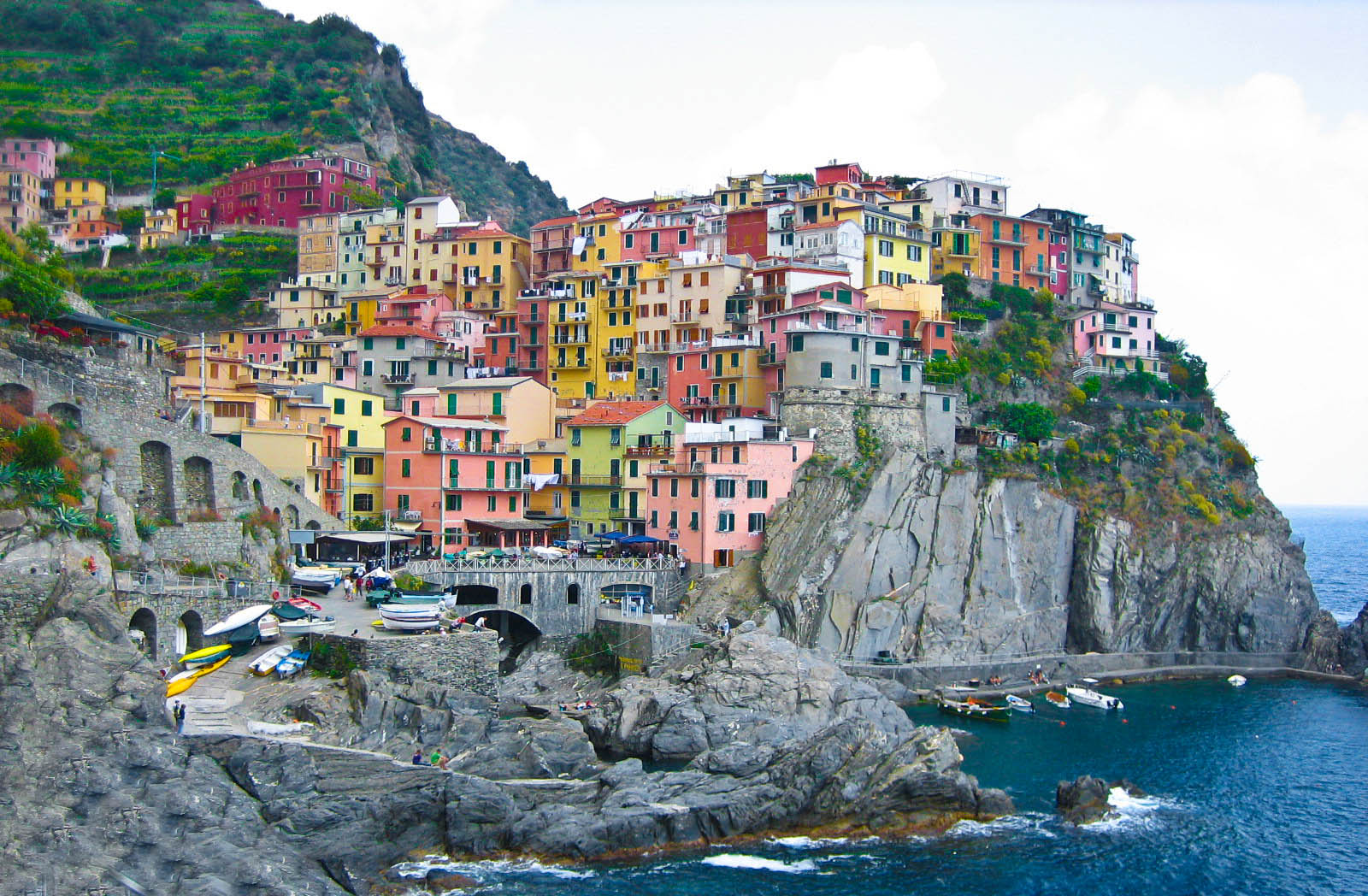
Als Cinque Terre (deutsch etwa Fünf Länder oder Fünf Ortschaften) wird ein etwa zwölf Kilometer langer, klimabegünstigter Küstenstreifen der Italienischen Riviera zwischen Punta Mesco und Punta di Montenero nordwestlich von La Spezia in der Region Ligurien bezeichnet. Von Nordwest nach Südost reihen sich die fünf Dörfer Monterosso al Mare, Vernazza, Corniglia, Manarola und Riomaggiore entlang der steil abfallenden Küste auf.
Die Region zählt etwa 7000 Einwohner und ist als Nationalpark geschützt, in dem nichts gebaut oder verändert werden darf. Im Jahr 1997 wurden die Cinque Terre zusammen mit Porto Venere und den Inseln Palmaria, Tino und Tinetto zum UNESCO-Weltkulturerbe erklärt.
The Cinque Terre (Italian pronunciation: [ˈtʃiŋkwe ˈtɛrre]; Ligurian: Çinque Tære, meaning "Five Lands") is a coastal area within Liguria, in the northwest of Italy. It lies in the west of La Spezia Province, and comprises five villages: Monterosso al Mare, Vernazza, Corniglia, Manarola, and Riomaggiore. The coastline, the five villages, and the surrounding hillsides are all part of the Cinque Terre National Park, a UNESCO World Heritage Site.
The Cinque Terre area is a popular tourist destination. Over the centuries, people have built terraces on the rugged, steep landscape right up to the cliffs that overlook the sea. Paths, trains and boats connect the villages as cars can reach them from the outside only via narrow and precarious mountain roads with great difficulty.
Les Cinque Terre (en ligure : Çinque Taere, « Cinq Terres ») forment une partie de la côte de la Riviera italienne, dans la Ligurie, à l'ouest de la ville de La Spezia. Les Cinque Terre comprennent cinq villages : d'ouest en est, Monterosso al Mare, Vernazza, Corniglia, Manarola et Riomaggiore qui sont rattachés au parc national des Cinque Terre créé en 19991.
Les Cinque Terre occupent un paysage accidenté et escarpé, sur lequel ont été construites au fil des siècles des terrasses permettant l'agriculture. Les villages sont bâtis sur la côte méditerranéenne, dans des criques et sur les falaises. Malgré la construction d'une route et d'une voie ferroviaire au XXe siècle, leur accès reste difficile.
Le Cinque Terre (Çinque Tære in ligure) sono un frastagliato tratto di costa della Riviera ligure di levante (Riviera spezzina) situato nel territorio della provincia di La Spezia tra Punta Mesco e Punta di Montenero, nel quale si trovano cinque borghi o, come si diceva anticamente, terre, qui elencati da ovest verso est: Monterosso al Mare, Vernazza, Corniglia, Manarola, Riomaggiore.
Se denomina Cinque Terre (en español, "Cinco Tierras") a una porción de costa formada por cinco pueblos en la provincia de La Spezia, bañada por el mar de Liguria en Liguria (Italia).
Cinque Terre abarca desde Punta Mesco hasta Punta di Montenero, y comprende los pueblos de Monterosso, Vernazza, Corniglia, Manarola y Riomaggiore.
Esta región, gracias a sus características geográficas, constituye uno de los principales atractivos de la riviera lígure. Su origen es un contexto orográfico muy particular, que da origen a un paisaje montañoso constituido por distintos estratos o "terrazas" que descienden hacia el mar con una fuerte pendiente. La mano del hombre, a lo largo de los siglos, ha modelado el terreno sin alterar el delicado equilibrio ecológico, utilizando esas terrazas en declive para desarrollar una particular técnica agrícola destinada a aprovechar todo lo posible la disposición del terreno.
En 1997, a instancias de la Provincia de La Spezia, las Cinque Terre, junto con Portovenere y las islas de Palmaria, Tino y Tinetto, fueron declaradas Patrimonio de la Humanidad de la Unesco.1 Cinque Terre y Portovenere está recogidas con el código 826-001. En 1999 se creó también el Parco Nazionale delle Cinque Terre ("Parque Nacional de las Cinco Tierras").
Чи́нкве-Те́рре, Чи́нке-Те́рре (итал. Cinque Terre, лиг. Sinque Tere — «Пять земель», «Пятиземелье») — национальный парк Италии, включает рукотворные террасы и пять небольших поселений на побережье Генуэзского залива в провинции Специя административного региона Лигурия. Область находится на территории восточной части так называемой Ривьеры — Ривьера-ди-Леванте. Местные памятники относятся к периоду средневековья, однако возникновение некоторых поселений восходит к римскому времени. В 1997 году ЮНЕСКО включила культурный ландшафт парка Чинкве-Терре в список Всемирного наследия человечества.
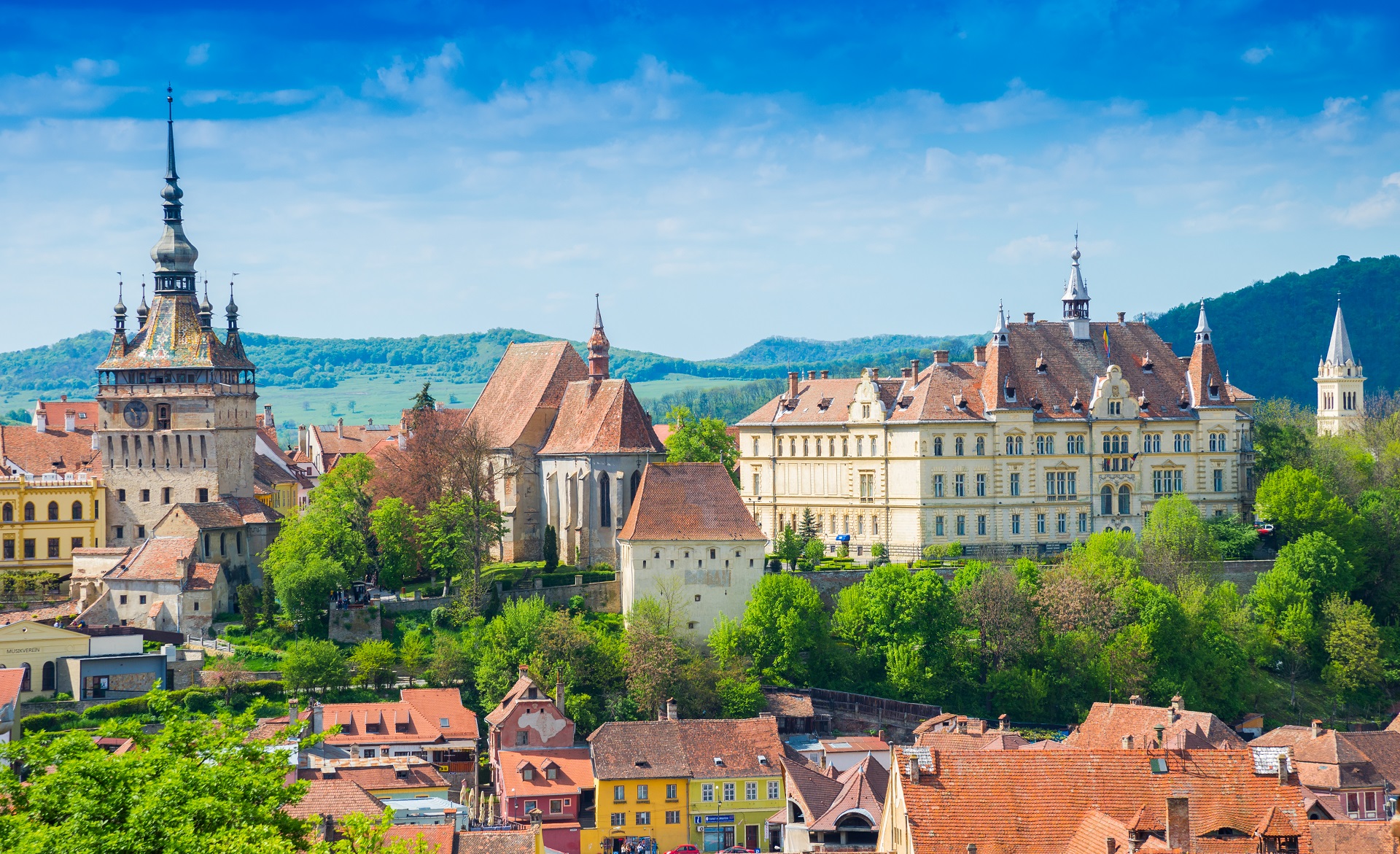
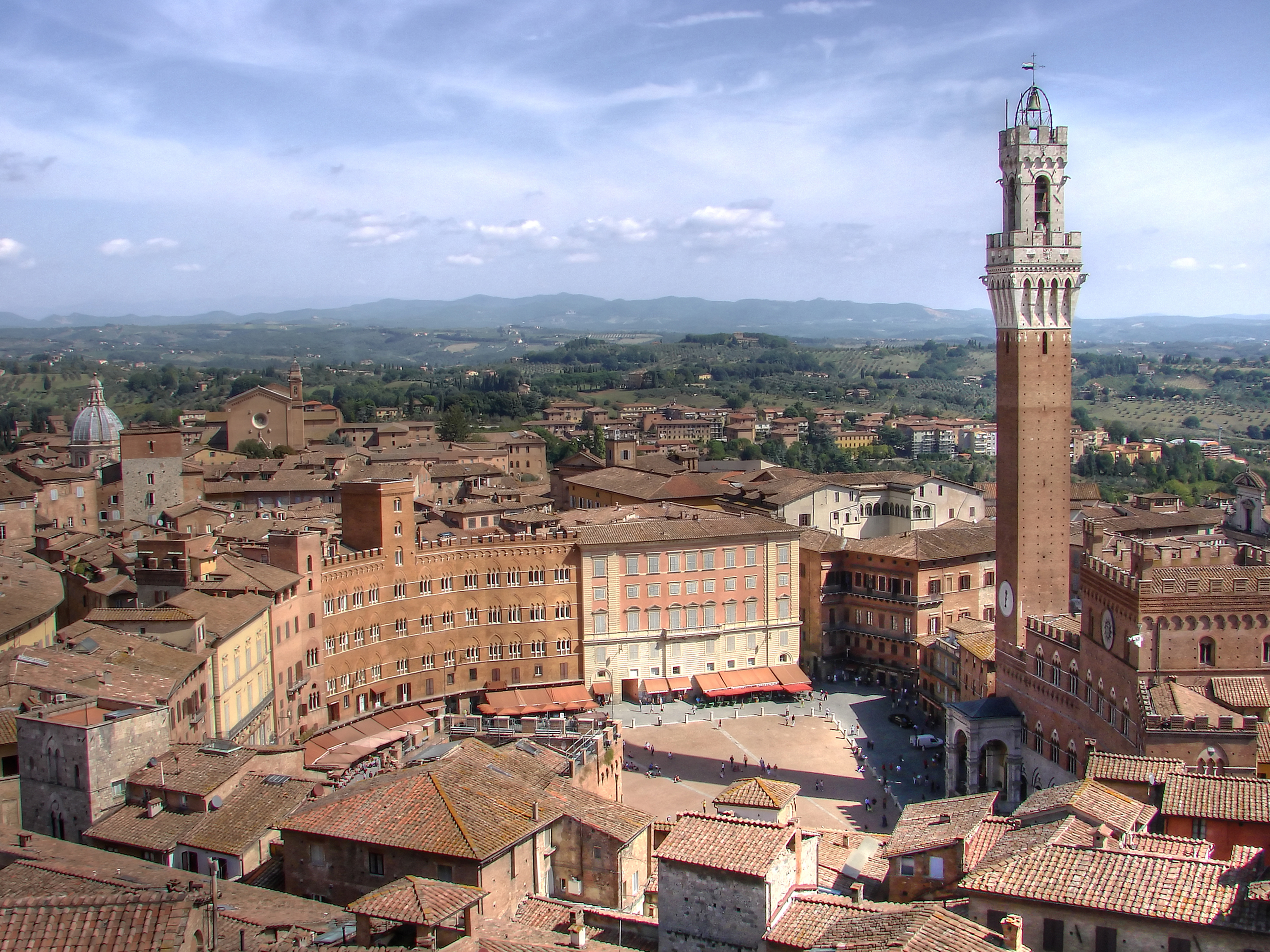
Siena (italienische Aussprache [ˈsjɛːna]) ist der Name einer Stadt mit 53.772 Einwohnern (Stand 31. Dezember 2016) und eines früheren Stadtstaates im Zentrum der italienischen Toskana.
Siena gilt als eine der schönsten Städte der Toskana und Italiens. Schon von jeher befindet sie sich in Rivalität mit Florenz, in politischer, wirtschaftlicher oder künstlerischer Hinsicht. Während Florenz als Paradebeispiel einer Renaissance-Stadt vor allem durch die schiere Masse und Größe seiner Bauwerke und Kunstwerke beeindruckt, hat Siena den mittelalterlichen Charakter der italienischen Gotik erhalten. Die historische Altstadt gehört seit 1995 zum UNESCO-Welterbe. Die Universität Siena, gegründet 1240, gehört zu den ältesten Universitäten Italiens und wird heute von etwa 20.000 Studenten besucht. Aus Siena stammt die Heilige Katharina von Siena.
Siena ist auch bekannt für den Palio di Siena, ein Pferderennen, das am zentralen Platz Piazza del Campo ausgetragen wird. Bei dem Rennen, das seit dem Mittelalter eine sehr große Bedeutung für Siena hat, treten zweimal im Jahr jeweils zehn der 17 Bezirke (Contrade) der Stadt gegeneinander an.
Siena ist Sitz der Banca Monte dei Paschi di Siena, der ältesten noch existierenden Bank der Welt, die gleichzeitig drittgrößte[2] Bank Italiens ist.
锡耶纳(Siena)位于意大利中部距佛罗伦萨南部大约50公里的南托斯卡纳州,该城建在阿尔西亚和阿尔瑟 河河谷之间基安蒂山三座小山的交汇处。锡耶纳城始建于公元前29年,是至今仍保存完好的中世纪城市。现有人口约54498人,面积118 平方公里。早在中世纪这里诞生了欧洲第一家银行;锡耶纳大学创建于1240年,为世界上历史最悠久的大学之一。作为金融、商贸、陶瓷、手工业及艺术、教 育、文化鼎盛一时的都市国家,锡耶纳的建筑、艺术和城市的规划对意大利甚至大部分欧洲都产生了很深刻的影响。1995年,联合国教科文组织将这座具有千年 历史的城市列入"世界遗产名录"。如今,这里已成为一座驰名世界的旅游文化名城。
锡耶纳古城景观
如 果说佛罗伦萨是文艺复兴的摇篮,那么锡耶纳就是这个摇篮中的一件艺术精品。宁静山丘上广布着小麦田,挺立如伞的柏树像一个个符号点缀着弯弯曲曲山间公路, 阳光斑驳的山丘边点缀着古老的城镇和村庄,中世纪的教堂和美术馆若隐若现。这座中世纪古城在恬美的托斯卡纳乡村的环抱之中,历经千年的洗礼仍保持着蓬勃的 生机,其中自然凝聚了锡耶纳人对家乡的无限热爱。19世纪英国诗人勃朗宁和勃朗宁夫人传奇般的爱情小说《看得见风景的房间》里的葡萄园就是以这里为背景而 创作出来的。热恋意大利温暖阳光的英国人让这里的托斯卡尼(Tuscany)名满天下,而一部《托斯卡尼艳阳下》又不知道勾起了多少人对这片土地的向往。
(Quelle: /www.bjghw.gov.cn)
锡耶纳(意大利语:Siena)是意大利托斯卡纳大区的一座城市,也是锡耶纳省的首府。其老城中心区1995年被联合国教科文组织列为世界文化遗产。锡耶纳是意大利著名旅游景点之一,在2008年共有超过169,000人次造访这座城市。锡耶纳以独特的料理、艺术、博物馆、中世纪景观和赛马节闻名于世。
シエーナ(イタリア語: Siena (![]() 音声ファイル))は、イタリア共和国トスカーナ州中部にある都市であり、その周辺地域を含む人口約5万3000人の基礎自治体(コムーネ)。シエーナ県の県都である。カナ転記としては「スィエーナ」が現地音に近い。「シエナ」とも表記される。
音声ファイル))は、イタリア共和国トスカーナ州中部にある都市であり、その周辺地域を含む人口約5万3000人の基礎自治体(コムーネ)。シエーナ県の県都である。カナ転記としては「スィエーナ」が現地音に近い。「シエナ」とも表記される。
中世には金融業で栄えた有力都市国家であり、13世紀から14世紀にかけて最盛期を迎えた。トスカーナ地方の覇権をフィレンツェと競い、またその経済力を背景として、ルネサンス期には芸術の中心地のひとつであった。中世の姿をとどめる旧市街は「シエーナ歴史地区」として世界遺産に登録されている。
Siena (Italian pronunciation: [ˈsjɛːna] ( listen); in English sometimes spelled Sienna; Latin: Sena Iulia) is a city in Tuscany, Italy. It is the capital of the province of Siena.
listen); in English sometimes spelled Sienna; Latin: Sena Iulia) is a city in Tuscany, Italy. It is the capital of the province of Siena.
The historic centre of Siena has been declared by UNESCO a World Heritage Site.[2] It is one of the nation's most visited tourist attractions, with over 163,000 international arrivals in 2008.[3] Siena is famous for its cuisine, art, museums, medieval cityscape and the Palio, a horse race held twice a year.
Sienne (Siena en italien) est une ville italienne, chef-lieu de la province du même nom, dans la région de Toscane. Elle compte 53 900 habitants en 2017.
La ville est célèbre pour son patrimoine artistique et pour la course du Palio delle Contrade, souvent abrégé en Palio, une spectaculaire course de chevaux qui voit s'affronter les contrade (paroisses et quartiers) de la ville deux fois par an, le 2 juillet et le 16 août. Elle figure dans la liste du patrimoine mondial établie par l'UNESCO.
Siena (Ascolta[?·info], IPA: /ˈsjɛna/) è un comune italiano di 53 818 abitanti[3], capoluogo dell'omonima provincia in Toscana.
La città è universalmente conosciuta per il suo ingente patrimonio storico, artistico, paesaggistico e per la sua sostanziale unità stilistica dell'arredo urbano medievale, nonché per il celebre Palio.
Nel 1995 il suo centro storico è stato inserito dall'UNESCO nel Patrimonio dell'Umanità.
Nella città ha sede la Banca Monte dei Paschi di Siena, fondata nel 1472 e dunque la più antica banca in attività nonché la più longeva al mondo.
Siena es una ciudad italiana de la región de la Toscana (Italia), capital de la provincia de Siena.
Сие́на или Сье́на (итал. Siena [ˈsjɛːna]) — город в итальянском регионе Тоскана, административный центр одноимённой провинции, один из крупнейших туристических центров Италии. В Средние века — столица Сиенской республики, средоточие художественной жизни эпохи треченто. Хорошо сохранившийся средневековый центр Сиены находится под охраной ЮНЕСКО как памятник Всемирного наследия.
Покровителем города почитается святой Ансан, празднование 1 декабря.

 Architecture
Architecture
 Eurovision Song Contest,ESC
Eurovision Song Contest,ESC

 History
History

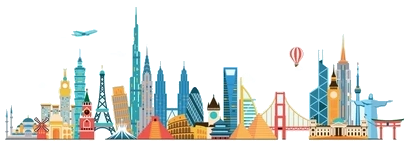 International cities
International cities
 European city
European city

 International cities
International cities
 *European Capital of Culture
*European Capital of Culture

 Medieval cities in Europe
Medieval cities in Europe
 Silk road
Silk road
 Turkey
Turkey

 Cities founded by the Romans
Cities founded by the Romans

 World Heritage
World Heritage


Istanbul (türkisch İstanbul, von griechisch εἰς τὴν πόλιν, eis tḕn pólin, „in die Stadt“: siehe unten), früher Konstantinopel, ist die bevölkerungsreichste Stadt der Türkei und deren Zentrum für Kultur, Handel, Finanzen und Medien. Mit rund 14,4 Millionen Einwohnern nahm die Metropolregion 2016 den 15.[5] Platz unter den größten Metropolregionen der Welt ein. Mit jährlich knapp zwölf Millionen Touristen aus dem Ausland ist Istanbul überdies die Stadt mit der achtgrößten Besucherzahl der Welt.[6] Die Stadt liegt am Nordufer des Marmarameeres auf beiden Seiten des Bosporus, also sowohl im europäischen Thrakien als auch im asiatischen Anatolien. Aufgrund ihrer weltweit einzigartigen Transitlage zwischen zwei Kontinenten und zwei Meeresgebieten, dem Schwarzen und dem Mittelmeer, verzeichnet sie einen bedeutenden Schiffsverkehr und verfügt über zwei große Flughäfen sowie zwei zentrale Kopf- und zahlreiche Fernbusbahnhöfe. Das Projekt Marmaray verbindet beide Hälften der Stadt per Eisenbahn und künftig die Kopfbahnhöfe an den Eisenbahnverkehr des jeweils anderen Kontinents. Istanbul ist daher einer der wichtigsten Knotenpunkte für Verkehr und Logistik auf internationaler wie nationaler Ebene.
Im Jahr 660 v. Chr. unter dem Namen Byzantion gegründet, kann die Stadt auf eine 2600-jährige Geschichte zurückblicken. Fast 1600 Jahre lang diente sie nacheinander dem Römischen, dem Byzantinischen und dem Osmanischen Reich als Hauptstadt. Als Sitz des ökumenischen Patriarchen und – bis 1924 – des osmanischen Kalifats war Istanbul zudem jahrhundertelang ein bedeutendes Zentrum des orthodoxen Christentums und des sunnitischen Islams.
Das Stadtbild ist von Bauten der griechisch-römischen Antike, des mittelalterlichen Byzanz sowie der neuzeitlichen und modernen Türkei geprägt. Paläste gehören ebenso dazu wie zahlreiche Moscheen, Cemevleri, Kirchen und Synagogen. Aufgrund ihrer Einzigartigkeit wurde die historische Altstadt von der UNESCO zum Weltkulturerbe erklärt. 2010 war Istanbul Kulturhauptstadt Europas.
伊斯坦布尔(土耳其语:İstanbul [isˈtanbuɫ] ![]() 聆听)是土耳其最大城市,亦是该国的经济、文化和历史中心。它坐落于土耳其西北部的博斯普鲁斯海峡之滨,位于马尔马拉海和黑海之间,横跨欧亚大陆,经济和历史中心位于欧洲一侧,有三分之一人口居住于亚洲一侧[3]。其人口达到1440万,为全欧洲最大的城市群,亦是中东最大和全球第六大城市[2][4]。伊斯坦布尔全市辖区面积5,343平方千米(2,063平方英里),其覆盖范围同伊斯坦布尔省相同,亦是该省的行政中心[c]。亦是世界上唯一横跨两大洲的城市。
聆听)是土耳其最大城市,亦是该国的经济、文化和历史中心。它坐落于土耳其西北部的博斯普鲁斯海峡之滨,位于马尔马拉海和黑海之间,横跨欧亚大陆,经济和历史中心位于欧洲一侧,有三分之一人口居住于亚洲一侧[3]。其人口达到1440万,为全欧洲最大的城市群,亦是中东最大和全球第六大城市[2][4]。伊斯坦布尔全市辖区面积5,343平方千米(2,063平方英里),其覆盖范围同伊斯坦布尔省相同,亦是该省的行政中心[c]。亦是世界上唯一横跨两大洲的城市。
公元前660年左右,该市以“拜占庭”之名建立于萨拉基里奥角,并在此后逐渐发展为历史上最为重要的城市之一。公元330年该市重建为君士坦丁堡([Κωνσταντινούπολις Konstantinoúpolis] 错误:{{lang-xx}}:文本有斜体标记(帮助);拉丁语:Constantinopolis)或新罗马([Νέα Ῥώμη, Nea Romē] 错误:{{lang-xx}}:文本有斜体标记(帮助);拉丁语:Nova Roma),并在此后的近十六个世纪内先后成为罗马帝国(330年–1204年及1261年–1453年)、拉丁帝国(1204年–1261年)和奥斯曼帝国(1453年–1922年)的帝国首都[5]。在罗马和拜占庭帝国时代,它对基督教的发展起到了重要的作用,而在1453年奥斯曼帝国征服该城之后,它成为了伊斯兰教的中心和奥斯曼帝国哈里发的驻地[6]。
伊斯坦布尔是古丝绸之路的途经地[7],也是欧洲和中东的铁路网络之间、黑海和地中海间海路的必经之地,使得伊斯坦布尔的战略地位十分重要,由此也哺育了兼收并蓄的人口和文化,虽然在1923年共和国成立之后这一状况略不如前。在战间期伊斯坦布尔 未能成为新首都,受到忽视,但此后其影响力逐步恢复。自1950年代以来,该市的人口已翻了十倍,来自安那托利亚各地的人口涌入,城市的界限也为此逐渐扩张[8][9]。20世纪末艺术节开始得到兴办,而随着基础设施的改善,复杂的交通网络也由此建立起来。
2012年,在当选欧洲文化之都两年之后,近1160万外国游客造访伊斯坦布尔 ,使其成为世界第五受欢迎的旅游目的地[10]。该市最重要的景点仍是其历史城区,部分被列为联合国教科文组织世界遗产,而位于贝伊奥卢区的天然港金角湾则是其文化和娱乐的中心。伊斯坦布尔还被认为是一个全球城市[11],亦是全球发展速度最快的都市经济区之一[12]。诸多土耳其公司及媒体将总部设于此,全市国内生产总值超过全国的四分之一[13]。伊斯坦布尔希望借助其复苏和快速扩张的契机,在二十年内五次申请举办夏季奥林匹克运动会[14]。
イスタンブール(トルコ語: İstanbul [isˈtanbul]、英語: Istanbul [ˌɪstænˈbuːl]、ラテン語: Constantinopolis コーンスタンティーノポリス、ギリシア語: Κωνσταντινούπολις コーンスタンティヌーポリス /現代ギリシア語 Κωνσταντινούπολι コンスタンディヌーポリ)は、トルコ最大の都市であり、経済・文化・歴史の中心地。トルコ語の発音に準じて「イスタンブル」と表記される場合もある。
Istanbul (UK: /ˌɪstænˈbʊl/, /-ˈbuːl/ or US: /-stɑːn-/ or /ˈɪstənbʊl/;[6][7][8] Turkish: İstanbul [isˈtanbuɫ] ( listen)), historically known as Byzantium and Constantinople, is the most populous city in Turkey and the country's economic, cultural, and historic center. Istanbul is a transcontinental city in Eurasia, straddling the Bosporus strait (which separates Europe and Asia) between the Sea of Marmara and the Black Sea. Its commercial and historical center lies on the European side and about a third of its population lives on the Asian side.[9] The city is the administrative center of the Istanbul Metropolitan Municipality (coterminous with Istanbul Province), both hosting a population of around 15 million residents. [3] Istanbul is one of the world's most populous cities and ranks as the world's 5th-largest city proper and the largest European city. Istanbul is viewed as a bridge between the East and West.
listen)), historically known as Byzantium and Constantinople, is the most populous city in Turkey and the country's economic, cultural, and historic center. Istanbul is a transcontinental city in Eurasia, straddling the Bosporus strait (which separates Europe and Asia) between the Sea of Marmara and the Black Sea. Its commercial and historical center lies on the European side and about a third of its population lives on the Asian side.[9] The city is the administrative center of the Istanbul Metropolitan Municipality (coterminous with Istanbul Province), both hosting a population of around 15 million residents. [3] Istanbul is one of the world's most populous cities and ranks as the world's 5th-largest city proper and the largest European city. Istanbul is viewed as a bridge between the East and West.
Founded under the name of Byzantion (Βυζάντιον) on the Sarayburnu promontory around 660 BCE, the city grew in size and influence, having become one of the most important cities in history. After its reestablishment as Constantinople in 330 CE, it served as an imperial capital for almost 16 centuries, during the Roman/Byzantine (330–1204 and 1261–1453), the Latin (1204–1261), and the Ottoman (1453–1922) empires.[10] It was instrumental in the advancement of Christianity during Roman and Byzantine times, before the Ottomans conquered the city in 1453 CE and transformed it into an Islamic stronghold and the seat of the Ottoman Caliphate.[11]
Istanbul's strategic position on the historic Silk Road,[12] rail networks to Europe and the Middle East, and the only sea route between the Black Sea and the Mediterranean have produced a cosmopolitan populace. While Ankara was chosen instead as the new Turkish capital after the Turkish War of Independence, the city has maintained its prominence in geopolitical and cultural affairs. The population of the city has increased tenfold since the 1950s, as migrants from across Anatolia have moved in and city limits have expanded to accommodate them.[13][14] Arts, music, film, and cultural festivals were established towards the end of the 20th century and continue to be hosted by the city today. Infrastructure improvements have produced a complex transportation network in the city.
Approximately 12.56 million foreign visitors arrived in Istanbul in 2015, five years after it was named a European Capital of Culture, making the city the world's fifth most popular tourist destination.[15] The city's biggest attraction is its historic center, partially listed as a UNESCO World Heritage Site, and its cultural and entertainment hub can be found across the city's natural harbor, the Golden Horn, in the Beyoğlu district. Considered a global city,[16] Istanbul has one of the fastest-growing metropolitan economies in the world.[17] It hosts the headquarters of many Turkish companies and media outlets and accounts for more than a quarter of the country's gross domestic product.[18] Hoping to capitalize on its revitalization and rapid expansion, Istanbul has bid for the Summer Olympics five times in twenty years.[19]
Istanbul ou Istamboul2 (en turc : İstanbul3), appelé officiellement jusqu'en 1930 et historiquement Constantinople, est la plus grande ville et métropole de Turquie et la préfecture de la province homonyme, dont elle occupe environ 50 % de la superficie mais plus de 97 % de la population. Quatre zones historiques de la ville sont inscrites sur la liste du patrimoine mondial de l'Unesco depuis 1985. Istanbul est le principal centre financier, commercial et industriel de la Turquie mais aussi la capitale culturelle du pays. La population de l'ensemble de l'agglomération stambouliote est évaluée à 15 millions d'habitants en 20144,5 ce qui en fait l'une des plus grandes mégapoles du monde. Forte d'un héritage culturel et historique important, la ville cosmopolite est un haut lieu du tourisme.
Située de part et d’autre du détroit du Bosphore — donc à cheval sur deux continents, l’Europe et l’Asie — Istanbul est généralement considérée comme européenne parce que la ville historique est située sur la rive occidentale du détroit.
Elle est la plus grande agglomération du pays avec plus de 15 millions d'habitants et l'une des plus grandes agglomérations d'Europe. Elle constitue aussi le principal pôle économique de la Turquie.
Appelée officiellement İstanbul depuis le 28 mars 1930, elle a porté d'autres noms durant son histoire (encore parfois utilisés selon les contextes) notamment : « Byzance », au moment de sa fondation ; puis « Constantinople » (à partir du 11 mai 330 en l'honneur de l'empereur romain Constantin Ier).
Appelée aussi la « Deuxième Rome », Istanbul appartint d'abord à la Thrace, puis à l’Empire romain dont elle fut la seconde capitale après 395 (devenu l'Empire romain d'orient et appelé au XVIe siècle « byzantin » par Hieronymus Wolf6), ensuite à l’Empire ottoman depuis le 29 mai 1453, et enfin, juste après la chute de celui-ci le 10 août 1920, à la République de Turquie, dont elle fut capitale jusqu'au 13 octobre 1923, lorsque cette fonction administrative fut transférée à Ankara.
Les anciens noms de la ville, Byzance puis Constantinople, témoignent de cette longue histoire. Seules quelques autres grandes villes ont eu trois noms au cours de leur histoire. Du point de vue historique, il est possible de considérer qu'avec Athènes et Rome, Constantinople (Istanbul) est l'une des trois capitales antiques les plus importantes.
Les habitants de la Byzance antique étaient appelés Byzantiotes et ceux de Constantinople, les Constantinopolitains ou les Politains. Par contre, aucun citoyen de l'Empire romain d'orient ne s'est jamais appelé Byzantin : ils se définissaient comme « Romains » et lorsqu'ils sont devenus sujets de l'Empire ottoman, celui-ci les a organisés dans le milliyet de Rum. Les habitants d’Istanbul sont les Stambouliotes ou les Istanbuliotes7.
La « Sublime Porte » ou simplement « la Porte » étaient les expressions qui désignaient le pouvoir politique ottoman s'il s'agissait du gouvernement ou « le Palais » s'il s'agissait du sultan.
Istanbul (in turco İstanbul, pronuncia [istan'buɫ]), storicamente conosciuta come Bisanzio (in greco antico: Βυζάντιον, Byzàntion; in latino: Byzantium), Costantinopoli (in latino: Constantinopolis; in greco antico: Κωνσταντινούπολις, Konstantinoupolis; in turco ottomano قسطنطينيه Kostantîniyye) o Nuova Roma (in latino: Nova Roma; in greco antico: Νέα Ῥώμη, Néa Rṓmē), è la città capoluogo della provincia omonima e il principale centro industriale, finanziario e culturale della Turchia.
Con una popolazione di circa 15 000 000 di abitanti,[2] Istanbul (considerando però anche i quartieri asiatici) è il secondo centro municipale più popoloso d'Europa (sesto nel mondo) davanti a Londra e dietro Mosca.
Istanbul è una megalopoli situata nel nord-ovest del paese, la quale si estende lungo lo stretto del Bosforo, alla cui estremità meridionale si situa il porto naturale del Corno d'Oro, e lungo la sponda settentrionale del Mar di Marmara. La città, divisa dal Bosforo, si estende sia in Europa (Tracia) sia in Asia (Anatolia), risultando l'unica metropoli al mondo appartenente a due continenti. Istanbul è considerata una città globale.
Nel corso della sua lunga storia, la città (chiamata Bisanzio fino al 330, poi Costantinopoli sino al 1453, Istanbul o Costantinopoli sino al 1930, e da allora in poi solo Istanbul) è stata la capitale:
- dell'Impero romano (330-395);
- dell'Impero bizantino (395-1204 e 1261-1453);
- dell'Impero latino (1204-1261);
- dell'Impero ottomano (1453-1922).
Conosciuta anche con l'appellativo di "seconda Roma", è stata fino alla conquista ottomana nel 1453 una tra le più grandi città della cristianità, divenendo in seguito per quasi cinquecento anni la capitale di uno dei più grandi imperi della storia e crocevia di culture. Quando è stata proclamata la Repubblica di Turchia, il 29 ottobre 1923, Istanbul fu considerata ormai troppo vulnerabile, potendo finire sotto tiro delle marine militari che avevano dimostrato bellamente di poter violare gli stretti durante la Prima guerra mondiale, e così Ankara, che in precedenza aveva servito come quartier generale del movimento cittadino turco durante la guerra d'indipendenza turca, è stata scelta come capitale del nuovo Stato turco.
Nel 2010 Istanbul è stata una delle capitali europee della cultura.[3] Sin dal 1985 le aree storiche di Istanbul fanno parte della lista UNESCO dei patrimoni dell'umanità.[4]
Estambul (en turco, İstanbul, [isˈtanbuɫ]), conocida históricamente como Bizancio y, después, Constantinopla, es la ciudad más poblada de Turquía y el centro histórico, cultural y económico del país. Fue sucesivamente capital de Estados soberanos como el Imperio romano, el Imperio romano de Oriente, el Imperio latino y el Imperio otomano hasta 1923 cuando se terminó en la Ocupación de Constantinopla. Es una ciudad transcontinental, ubicada en el estrecho del Bósforo, que separa Europa y Asia, entre el mar de Mármara y el Mar Negro. Dos tercios de la población viven en la parte europea de la ciudad.2 Con más de 15 millones de habitantes, Estambul es una de las ciudades más pobladas del mundo.3 La mayor parte de la población es de religión musulmana, si bien existen minorías de cristianos (68 000) y de judíos (22 000).
Fue fundada con el nombre de Bizancio (Βυζάντιον) en el promontorio de Sarayburnu alrededor del 660 a. C., y su tamaño e influencia crecieron, y se ha convertido en una de las ciudades más importantes de la historia universal. Desde su refundación bajo el nombre de Constantinopla en 330 d. C., Estambul ha sido la capital del Imperio romano-Imperio bizantino (330-1204 y 1261-1453), del Imperio latino (1204-1261) y del Imperio otomano (1453-1922).4 Fue una de las ciudades en las que floreció el primer cristianismo. Durante el período bizantino, la ciudad estaba habitada por cristianos. Tras la caída de Constantinopla ante los otomanos en 1453, la ciudad se fue transformando en una ciudad musulmana y en la sede del califato otomano.5 Tras la caída
Es también la capital administrativa de la provincia de Estambul (de la que cubre 27 distritos)6 en la llamada Rumelia o Tracia oriental. El nombre de İstanbul, usado de forma no oficial desde hacía varios siglos en el país, fue oficializado el 28 de marzo de 1930 en sustitución de Constantinopla. Aunque la capital política y administrativa es Ankara, Estambul sigue siendo una ciudad que tiene un papel fundamental en la industria, el comercio y la cultura de Turquía. Alberga más de una docena de universidades. Es sede del Patriarcado Ecuménico de Constantinopla, cabeza de la Iglesia ortodoxa.
Con el final de la I Guerra Mundial y la derrota del Imperio otomano, el territorio europeo otomano quedó reducido a unas decenas de kilómetros en torno a Estambul. El 13 de octubre de 1923,7 antes de la promulgación del estado turco sucesor, la República de Turquía, el parlamento turco trasladó legalmente la capitalidad a Ankara.
Las zonas históricas de Estambul fueron declaradas Patrimonio de la Humanidad por la Unesco en el año 1985, por sus importantes monumentos y restos históricos.8
Стамбу́л (тур. İstanbul — [isˈtanbuɫ]), также известный как Константинóполь, и в славянских источниках как Царьгрáд — крупнейший город Турции, главный торговый, промышленный и культурный центр, основной порт страны. Расположен на берегах пролива Босфор, разделяющего его на европейскую (основную) и азиатскую части, соединённые мостами и тоннелями. По численности населения первый город в Европе (при учёте населения, проживающего как в собственно европейской, так и в азиатской частях). Бывшая столица Римской, Византийской, Латинской и Османской империй.
В VII веке до нашей эры колонистами, в основном, выходцами из греческого города Мегары, был основан город Византий[3][4][5]. В 330 году римский император Константин I Великий перенёс столицу Римской империи в Византий, которому было дано название Новый Рим, однако это наименование не прижилось, и вскоре столицу стали называть Константинополем — городом Константина[6][7][8][9]. В XIII веке арабы использовали название Истинполин, которое восходит к греческой фразе греч. εἰς τὴν Πόλι(ν) («ис тин пόли(н)», «ис тим бόли(н)») — в город(е)[10]. Отсюда могло произойти современное название[11][12]. Согласно другой версии, оно происходит от Исламбул (город ислама), что, однако, вызывает сомнения в связи с существованием вышеупомянутого названия Истинполин, созвучного современному, ещё до падения Константинополя в 1453 г.[13] Фирман 1760/1 г., который на практике так и не был реализован, в качестве официального устанавливал встречавшееся уже в документах XV в. название Исламбол, то есть наполненный исламом[14][15]. С конца XVIII в. в европейских странах, в том числе в России, в употребление входит искажённая форма: Стамбул. Формально город после его захвата турками и переноса туда столицы империи не переименовывался: для турок он как был, так и оставался Истанбулом (Стамбулом), а для греков — Константинополем.
До 1930 года официальное, международно принятое название города: Константино́поль (с греч. — «Город Константина»; тур. Konstantiniyye), каковое признавалось Великим национальным собранием Турции: подписи его полномочных представителей стоят под Лозаннским договором, текст которого использует исключительно топоним Константинополь[16]. В официальных русских текстах Константинопольского договора 1724 года, Парижского мирного договора 1856 года, Сан-Стефанского мирного договора 1878 года и Берлинского трактата 1878 года используется принятый тогда в России топоним Константинополь. Другое историческое название, до сих пор используемое в титуле Константинопольского патриарха: Но́вый Рим[17] или Второй Рим (

York ist eine Stadt im Norden von England am River Ouse nahe der Mündung des River Foss. York war bereits in der Römerzeit ein bedeutendes Zentrum und später die Residenzstadt der Grafschaft Yorkshire. Heute ist die City of York eine selbständige Verwaltungseinheit (Unitary Authority), die nur zu zeremoniellen Anlässen zur Grafschaft North Yorkshire gehört.
约克(英语:York,当地 ![]() i/ˈjɔːrk/),位于英国英格兰约克郡-亨伯区域北约克郡,英格兰的城市、单一管理区,位于乌斯河畔、利兹东北偏东,起初为盖尔人的居点,后为罗马人、盎格鲁人、丹麦人和诺曼人占领。中世纪该城是繁荣的羊毛市场和教育中心,其大主教地位仅次于坎特伯雷大主教。
i/ˈjɔːrk/),位于英国英格兰约克郡-亨伯区域北约克郡,英格兰的城市、单一管理区,位于乌斯河畔、利兹东北偏东,起初为盖尔人的居点,后为罗马人、盎格鲁人、丹麦人和诺曼人占领。中世纪该城是繁荣的羊毛市场和教育中心,其大主教地位仅次于坎特伯雷大主教。
 Grand Est
Grand Est
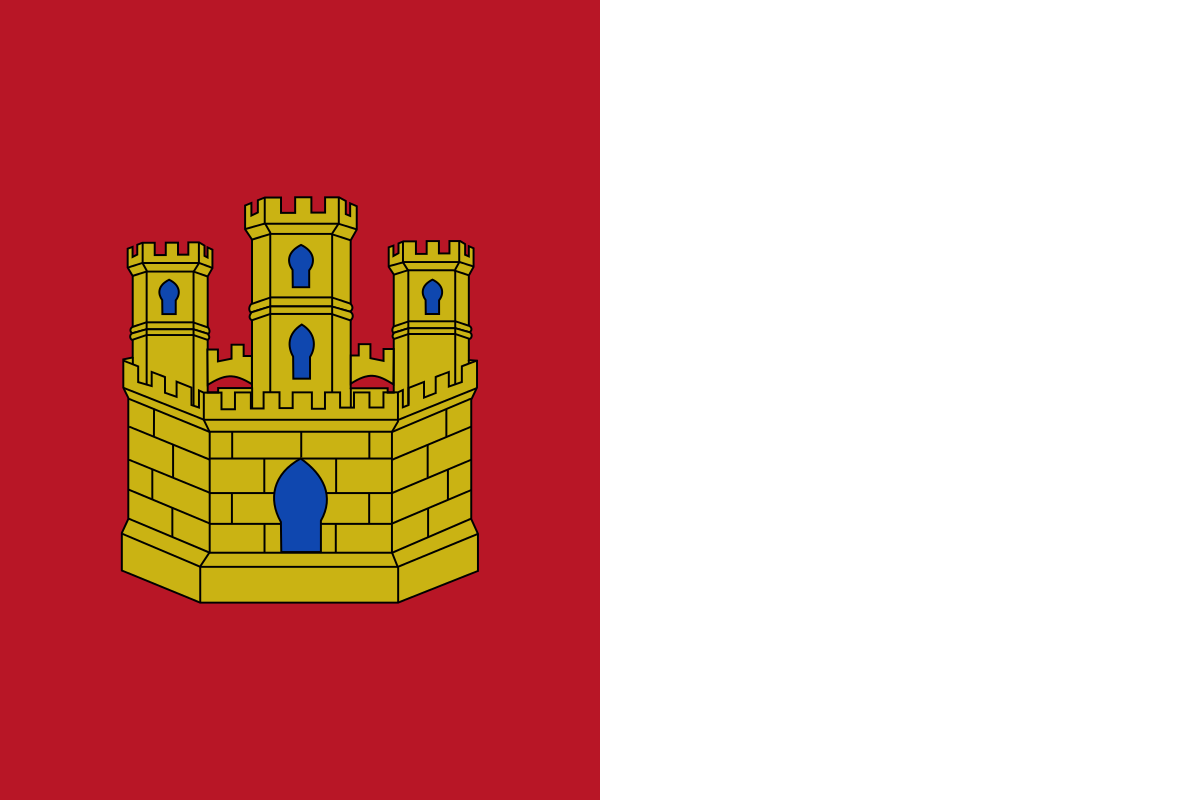 Castilla-La Mancha
Castilla-La Mancha
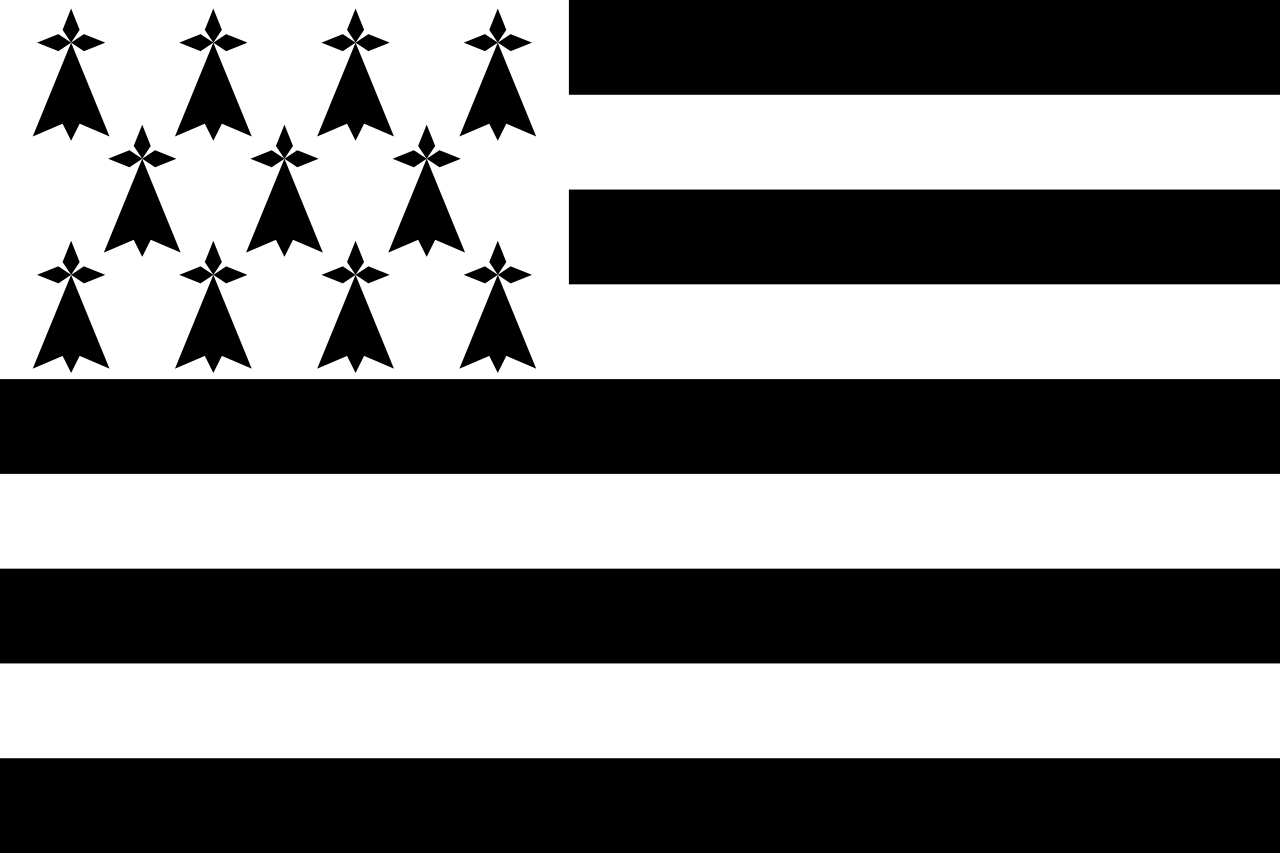 Bretagne
Bretagne
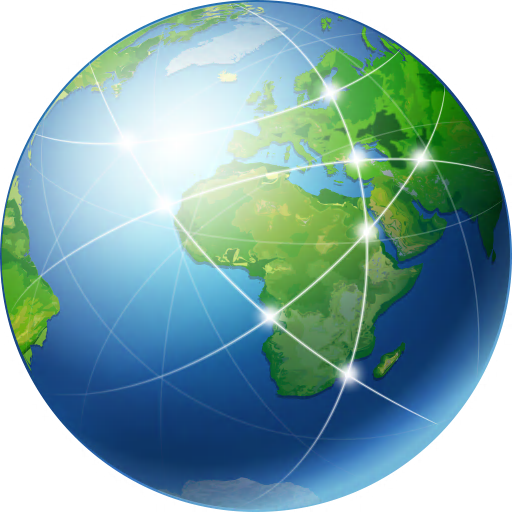 Geography
Geography
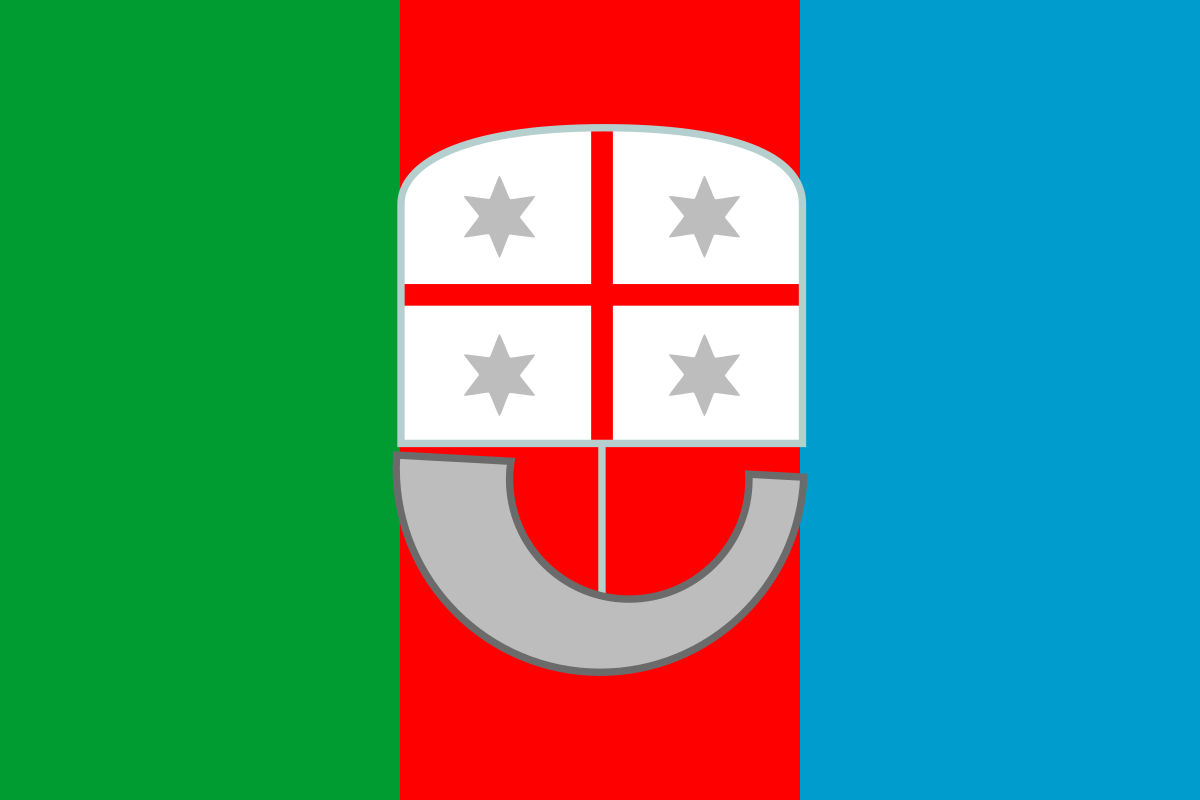 Liguria
Liguria
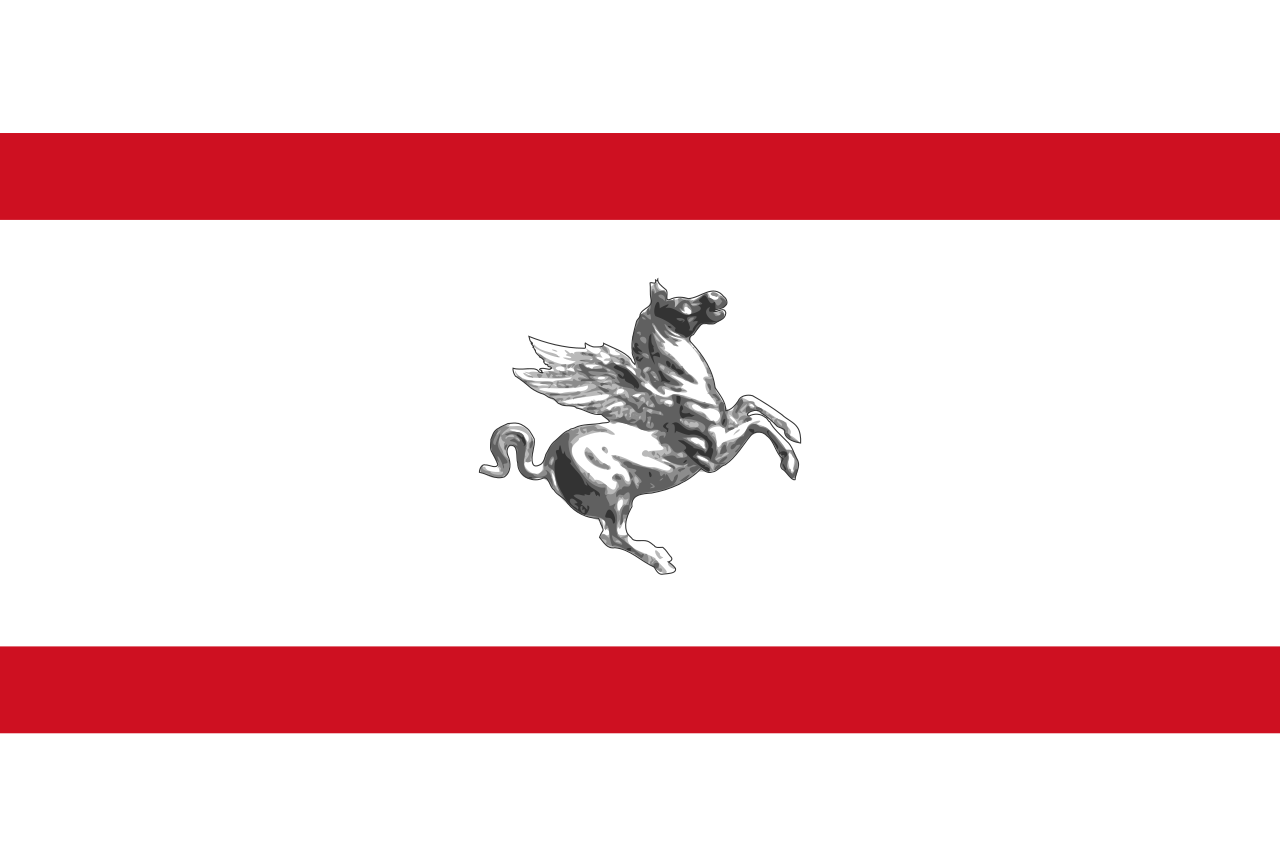 Toscana
Toscana
